Gold Sheen Sapphire prices remain stable and Wikipedia article remains inaccurate.
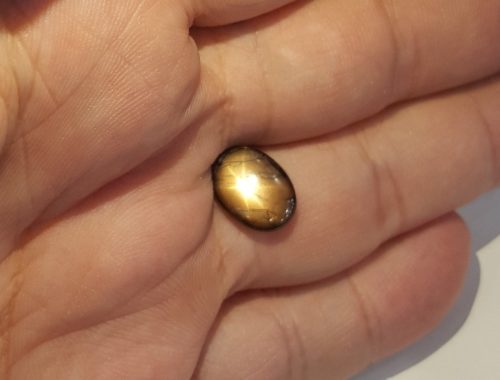

Gold Sheen Sapphire prices remain stable and Wikipedia article remains inaccurate.
Prices for gold sheen sapphire have remained relatively constant over the last 12 months. The 2019 price chart and price reporting has been updated to bring it into line with the gold sheen sapphire grading system developed by T.M. Malik and S. Waddington. The most notable change is the inclusion of the “commercial” grade to meet a market price point under $100 per carat.
The first half of the year saw prices ease, most likely as a result of general market conditions. However prices recovered somewhat in the latter half, sales from September shows (Bangkok and Hong Kong) reported as good, despite very unfavourable conditions in Hong Kong.
New cuttings of “exceptional” grade material were premiered at the September Bangkok Gem and Jewelry show and were readily sought by Japanese, Chinese, and European buyers.
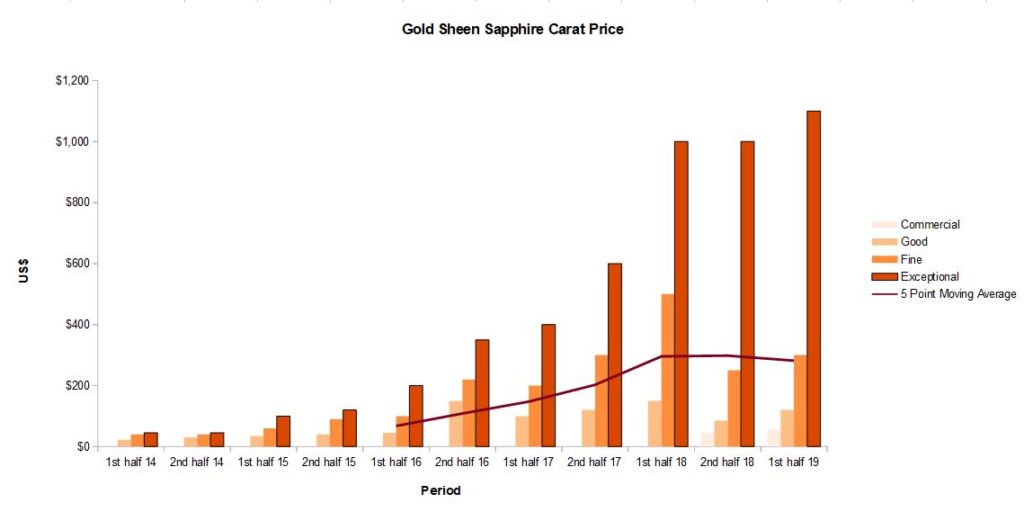
Observed prices for Commercial grade stones were seen to range from $35 to $75 per carat. Good to Very Good Grade sales were reported ranging from $85 to $200, while Fine and Very Fine grade showed a wide variation with prices negotiated from $235 to $600 per carat for single, very fine grade collectors pieces.
The most marked variation was for Exceptional grade stones ranging from $800 to “over $1,500” reported in one case.
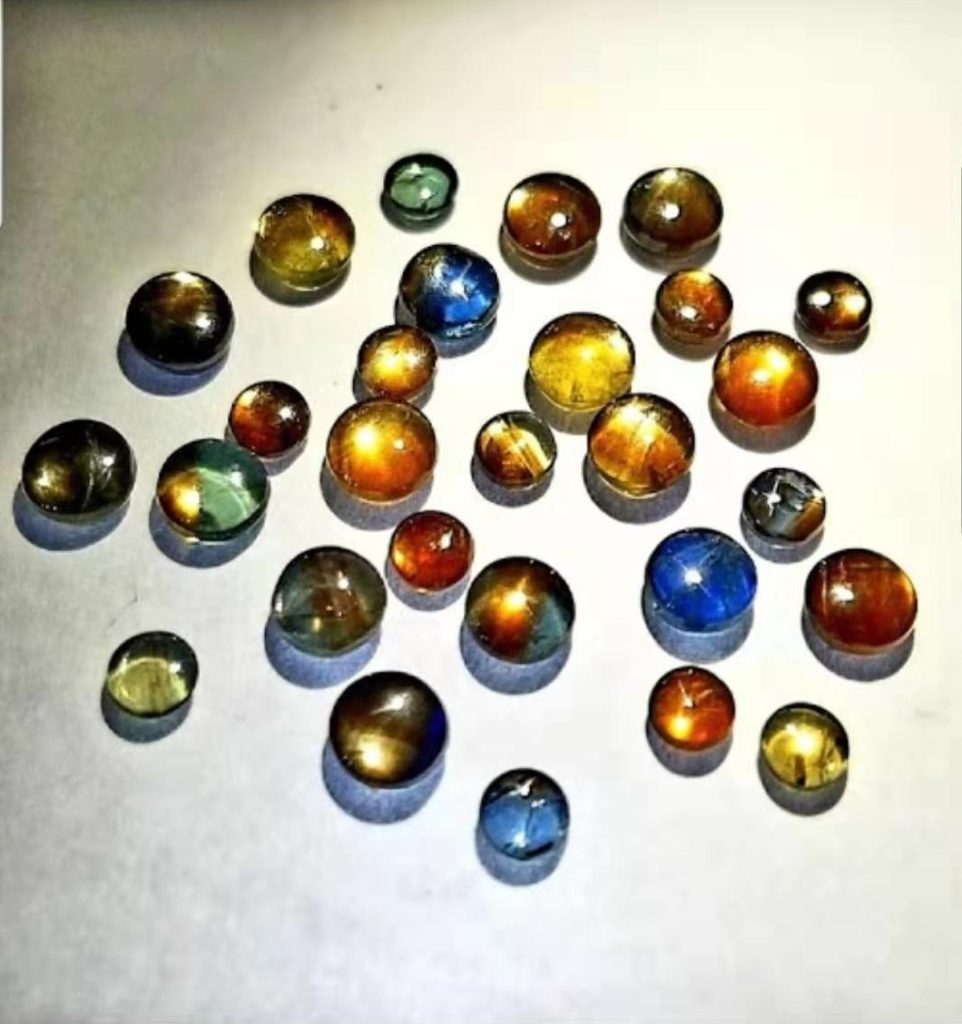
For more information on Gold Sheen Sapphire, see my information page here: https://sjwgems.com/gold-sheen-sapphire/
What is Gold Sheen Sapphire, and why is it different from other varieties of corundum?
This is an important question because gold sheen sapphire can sell for $1,000 per carat or more, yet a Google search can reveal gems claimed to be gold sheen for under $10 per carat. Like separating any natural gem from its simulants, price is the first indicator that lets the buyer know the seller might be less than honestly describing the product.
Gold sheen sapphire is an industry recognised unique variety of corundum that came to prominence with an report in the Journal of Gemmology in 2015[1] and subsequent additional investigation by other gemological labs, including the Gemological Institute of America[2]. Major gem labs have independently tested gold sheen sapphire, and reached similar conditions. These include some of the most prestigious gemological laboratories, and the most respected gemologists in the world – no less than the Gem and Jewelry Institute of Thailand[3], Lotus Gemology[4], Gem Research Swisslab[5], the Asian Gem Laboratory[6], the Asian Institute of Gemological Sciences[7], and the Gemological Institute of America[8].
T. N. Bui et al of Gem-A[1], T. Thanapong et al of the Gem and Jewelry Institute of Thailand[9], and W. Soonthorntanikul et al of the GIA[10], in independently assessing gold sheen sapphire differentiate it from other corundum varieties due to “… the golden sheen (set II) stones seemed to contain much higher amounts of platelets and needles intersecting in three crystallographic directions than those in the non-sheen (I) set”[11]. Which is to say, gold sheen sapphire is unique due to high amounts of microscopic platelets and needles that are not present in that quantity in other varieties of corundum. Therefore, as with identifying many types of gemstone, microscopic inspection is key to differentiating gold sheen sapphire from other varieties. However, since the abundant microscopic inclusions are responsible for the overall visual effect, the result is to produce a schiller or sheen that is obvious to the naked eye.
T. Thanapong et al also write “… the combination of plentiful occurrence of exsolved reddish brown platelets plus short needles in three crystallographic directions in the basal pinacoid of sapphire is responsible for golden sheen star effects found in the set II samples”[11]. Meaning that all gold sheen sapphire should exhibit asterism in the form of a ‘golden star’. This can easily be checked with any cabochon cut stone, and also for any faceted stone using the ‘water drop’ method to reveal its potential asterism.
The photo below illustrates the asterism and to some degree the sheen effect in gold sheen sapphire. Evident also are colour variations and translucency that further separate the variety and increase its value with buyers.
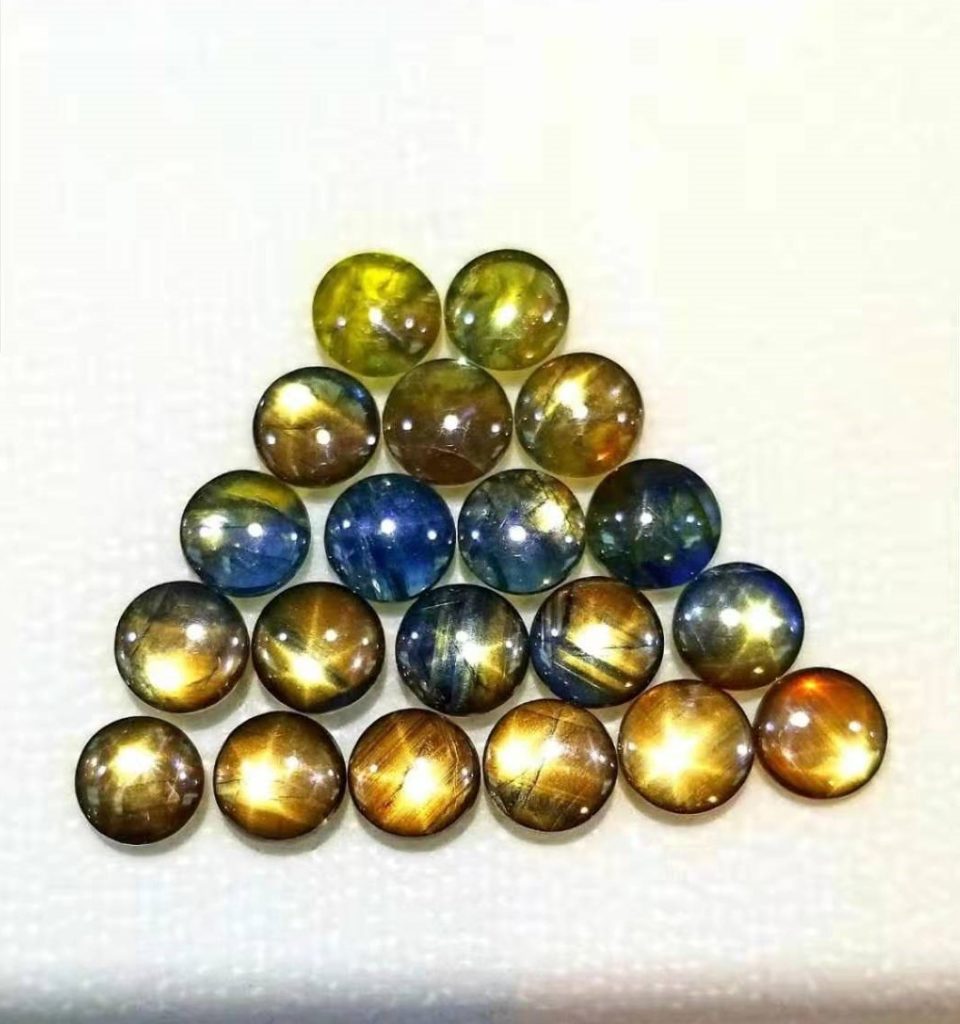
In conclusion, both observation of an obvious sheen or schiller in the gem, combined with golden star asterism will enable the separation of gold sheen sapphire from other varieties.
References:
[1] Bui T.N., T.N.; Deliousi, K.; Malik T.K., T.K.; De Corte, K. (2015). “From exsolution to ‘gold sheen’: A new variety of corundum” (https://gem-a.com/education/resources/application-and-downloads/syllabus/3250- from-exsolution-to-gold-sheen-a-new-variety-of-corundum-journal-of-gemmology-34-8-678-691/). Journal of Gemmology. 34 (8): 678–691.
[2] Update on Spectroscopy of “Gold Sheen” Sapphires Wasura Soonthorntantikul, Ungkhana Atikarnsakul, and Vararut Weeramonkhonlert https://www.gia.edu/gems-gemology/winter-2016-labnotes-update-spectroscopy-gold-sheen-sapphires
[3] GIT Gem Identification Report 150128130002
[4] Lotus GEMology reports No. 3350-0421, 3649-6150, 1317-8984
[5] GRS Gemstone Report No. GIRS2015-016808
[6] AGL Laboratory Report No. 0009471
[7] AIGS Gemstone Identification Report No. GF17092148
[8] GIA Gemological Reports 6222086838, 5223094814, 1229094877, 3225094890
[9] Nalin Narudeesombat, Saengthip Saengbuangamlam, Thanapong Lhuaamporn and Thanong Leelawatanasuk (2016). “Golden Sheen and Non-Sheen Sapphires from Kenya” (PDF). The Gem and Jewelry Institute of Thailand (Public Organization), Bangkok, 10500, Thailand. July–August 2016: 283–284
[10] Update on Spectroscopy of “Gold Sheen” Sapphires Wasura Soonthorntantikul, Ungkhana Atikarnsakul, and Vararut Weeramonkhonlert https://www.gia.edu/gems-gemology/winter-2016-labnotes-update-spectroscopy-gold-sheen-sapphires
[11] Nalin Narudeesombat, Saengthip Saengbuangamlam, Thanapong Lhuaamporn and Thanong Leelawatanasuk (2016). “Golden Sheen and Non-Sheen Sapphires from Kenya” (PDF). The Gem and Jewelry Institute of Thailand (Public Organization), Bangkok, 10500, Thailand. July–August 2016: p. 284
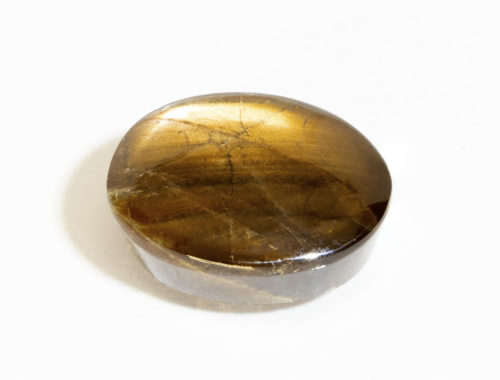
Difficulties with photographing gold sheen sapphire
A friend sent me a ruby to help assess the value a parcel they were considering as an investment. On first glance it looked like a very nice gem, but all that can be said about it at that stage is “it is a red transparent stone”. The parcel was reported to have come from the Luc Yen mines in Vietnam, a source of exceptional rubies and spinel.
The first step is to determine if it is actually ruby. A minute or so with the refractometer revealed an RI of 1.762 to 1.77, as expected for corundum. It’s birefringent nature was verified under the polariscope, with a lovely uniaxial figure. No more testing needed here, it’s clearly corundum.
Next is to look under magnification. Under a 10x loupe, the gem is remarkably clean, there are no inclusions to be seen at all. This is either an exceptional natural ruby, in the order of $10,000 per carat, or it is a synthetic worth tens of dollars per carat. One point of note is that the girdle was not polished and many of the crown facets were misaligned. Generally I would expect a top value ruby to also have excellent facets and finish.
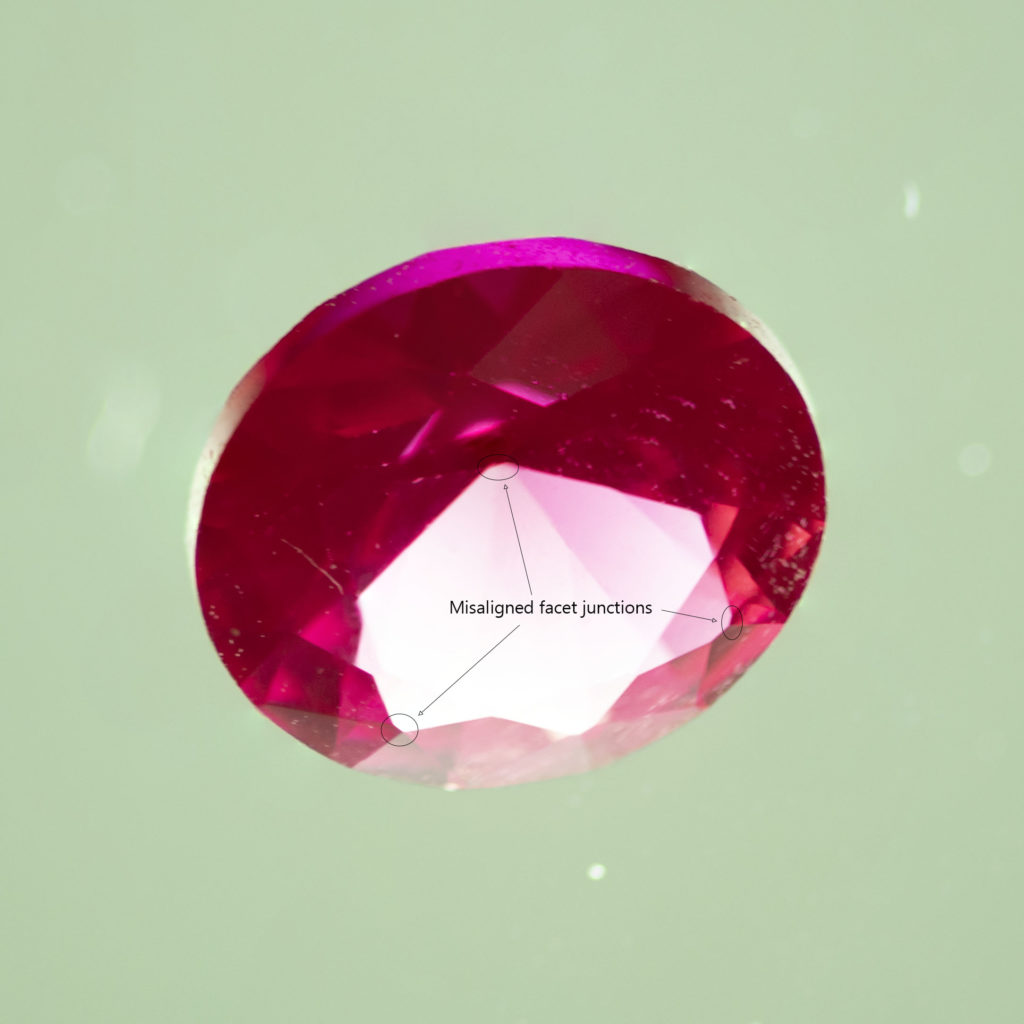
Under higher magnification, 30x, the gem was still essentially flawless. However, under diffuse lighting curved colour banding could be clearly seen. Curves simply don’t appear in natural corundum, but are a common feature of synthetic gems made with the flame fusion process.
These photos were taken with a Canon DSLR and 100mm macro lens. The ruby is 6.5mm in circumference and the optics are pushed to their limits to get an image at about 25x magnification. Nevertheless, the features are clear enough to be made out, though they are much more obvious under a microscope. The white spots are just specs of dust on the surface.
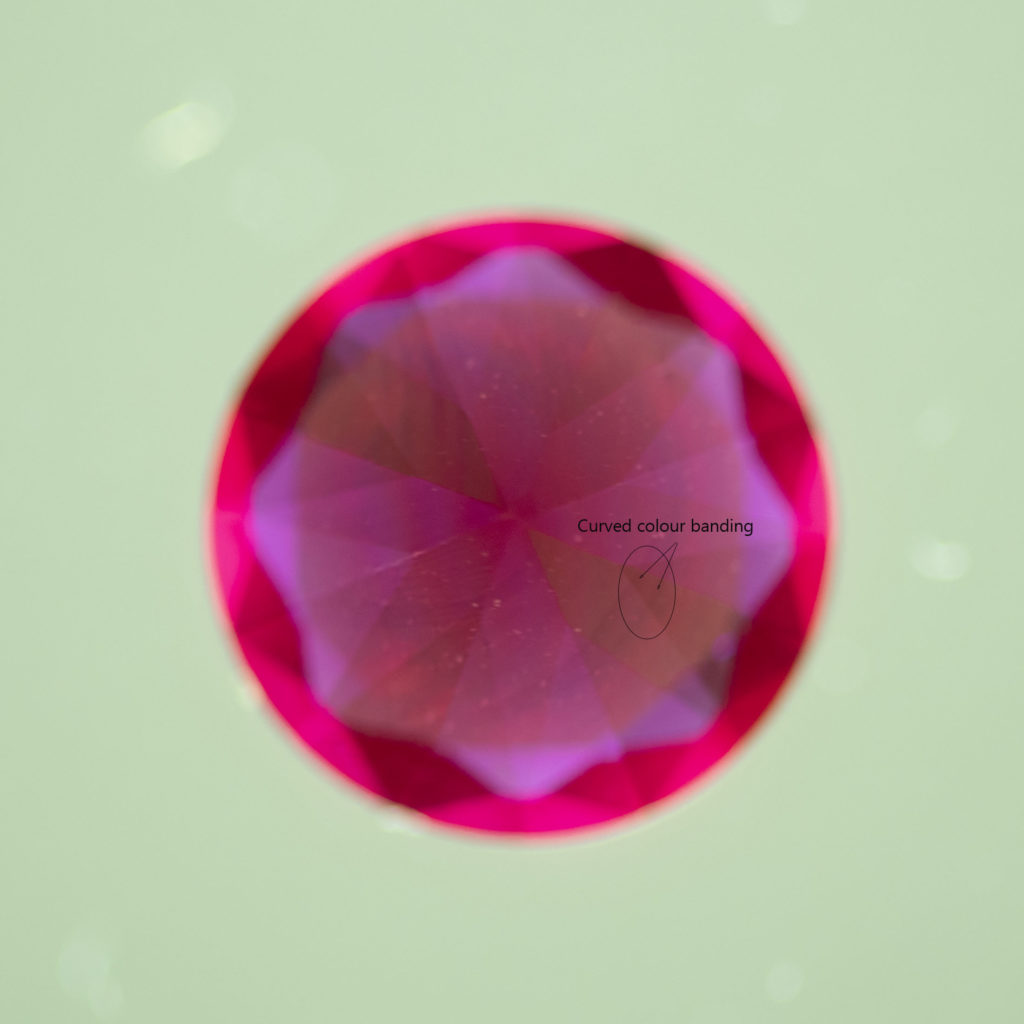
At this point there is no doubt it is synthetic ruby. A very nice gem, but worth maybe $30 at most.
This update for Gold Sheen Sapphire pricing uses sales price point data from Tucson, Hong Kong and Bangkok exhibitions, as well as shop front sales from January to April 2018.
Prices have increased for all grades, most notably for grade 1 and 2. Increased pricing was a result of strong interest from Japanese buyers, which flowed over to grade 2 pricing as well. Grade three pricing was a more general result of broad buyer interest. Most notably highest quality pieces reached $1,000 per carat – a significant milestone for Gold Sheen Sapphire.
If you would like information about how to invest in Gold Sheen Sapphire you can visit our wholesale page: https://sjwgems.com/wholesale/ or email gss@sjwgems.com.
The Federated International GemLab SA in association with the International Colored Gemstone Association now recognises Gold Sheen Sapphire as a unique variety of corundum.
Six certificates were issued by the FIG Bangkok office on 20th November.
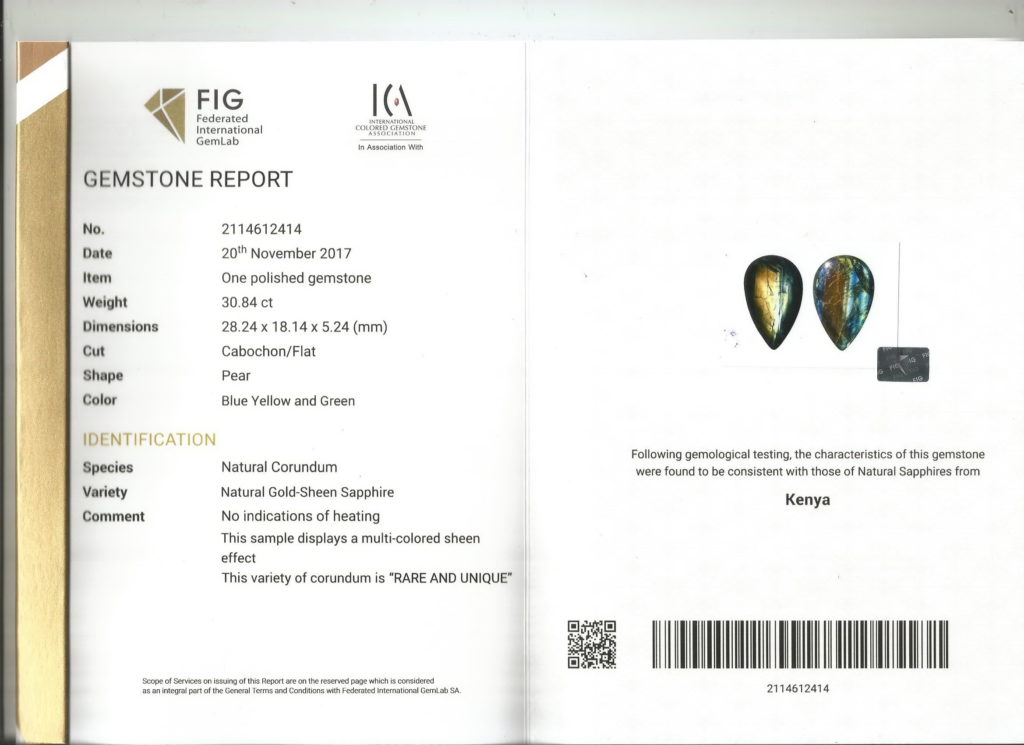
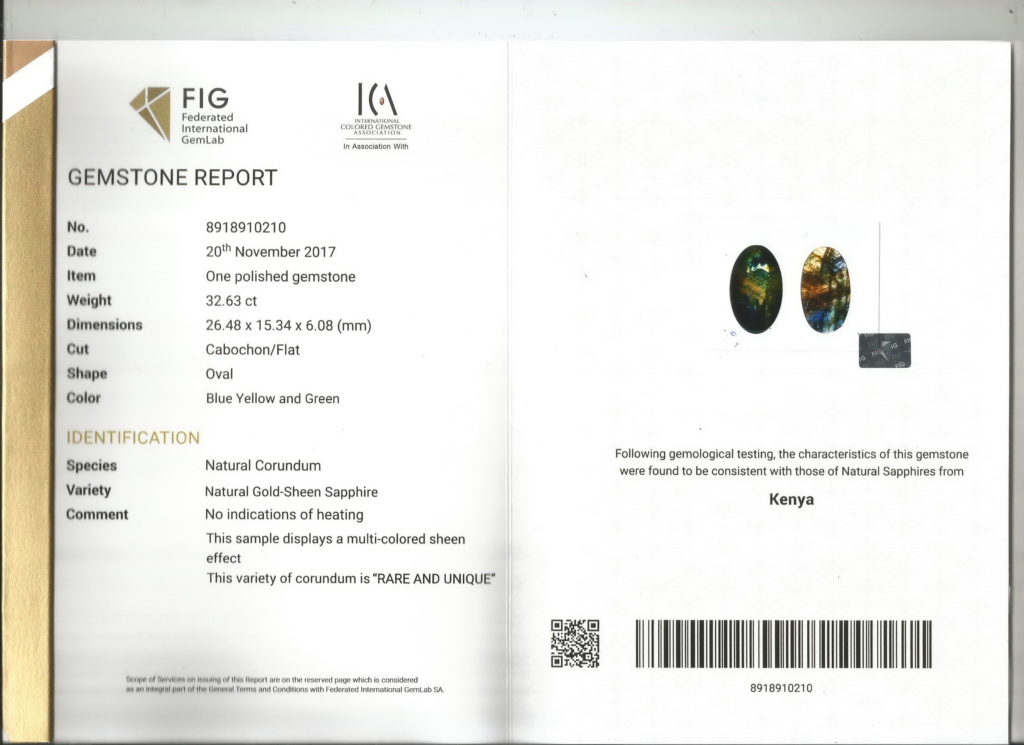
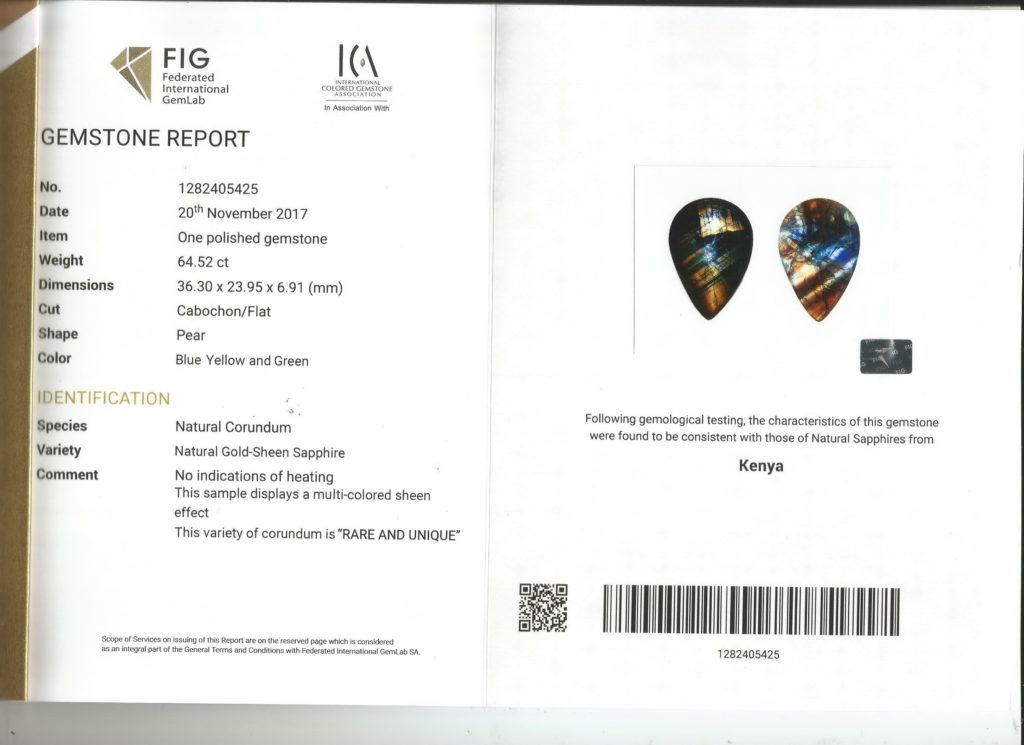
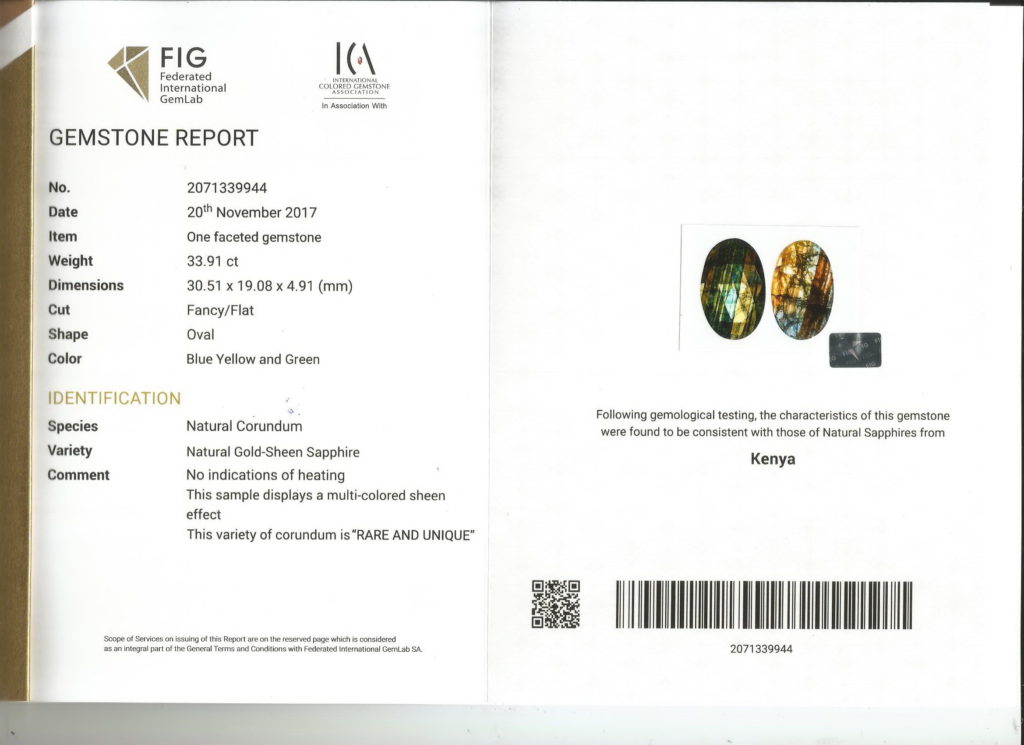
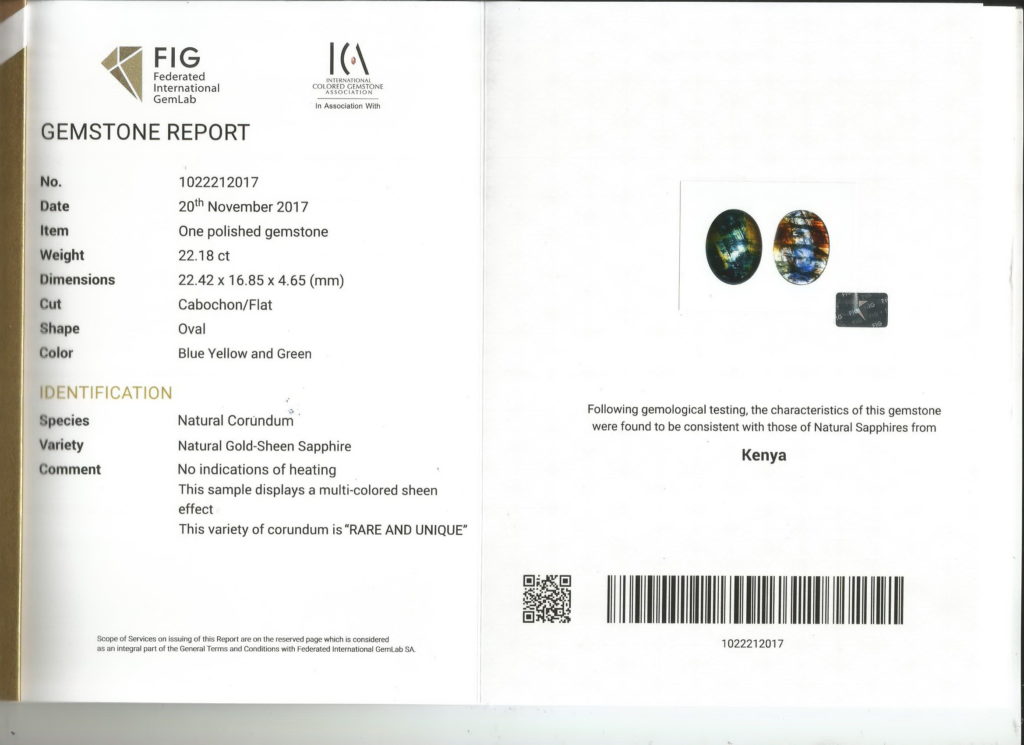
This is the price update for Gold Sheen Sapphire for the 2nd half of 2017. It covers the reported sale prices from the September Hong Kong and Bangkok Gem and Jewelry Trade Fairs.
I have made the following changes to the chart layout:
Since price data comes principally from major trade fairs, ‘Trade Price’ of pieces sold is a more reliable indicator of current price. There are enough data points now to give a meaningful moving average, this should provide a good trend indicator for the future price.
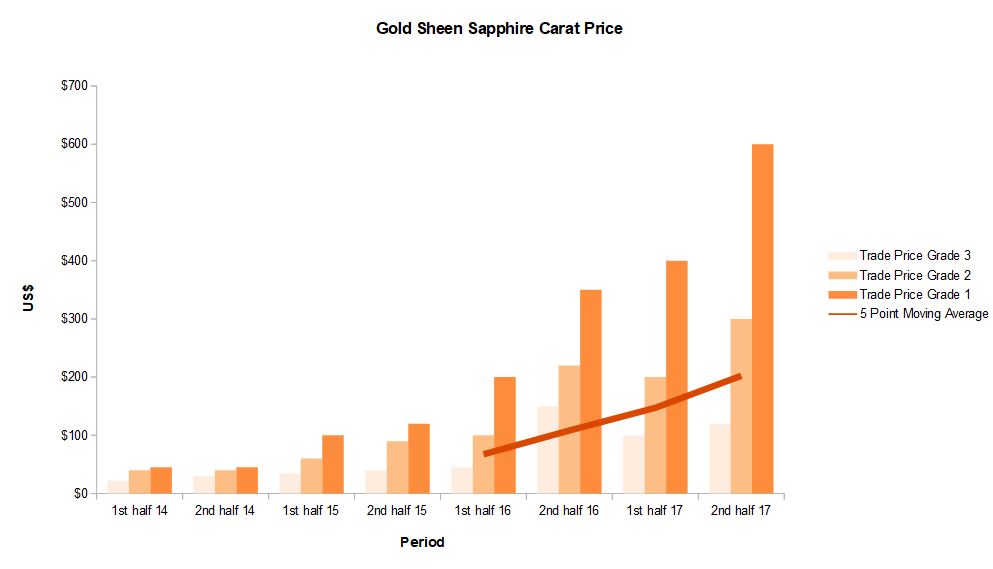
.